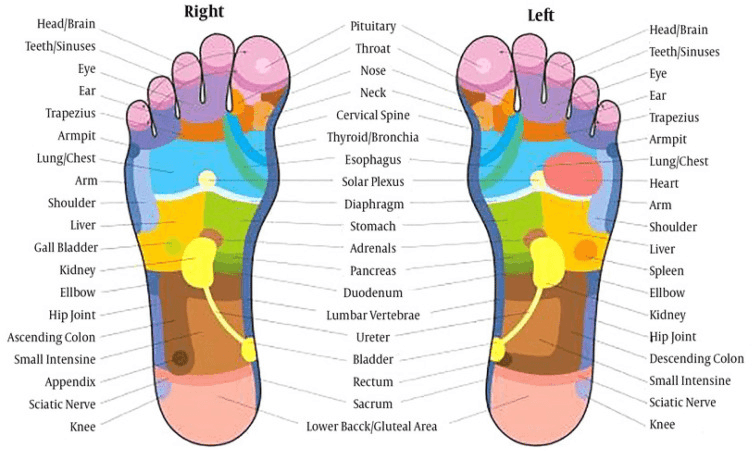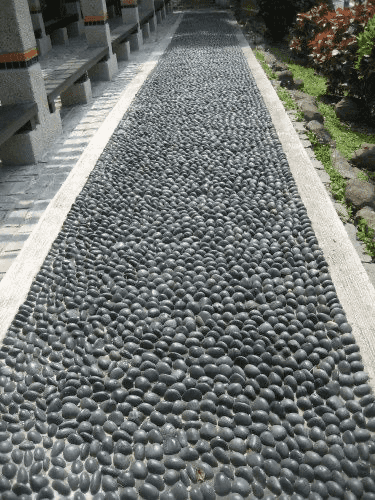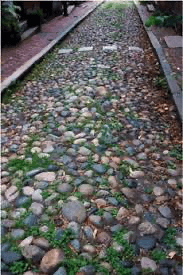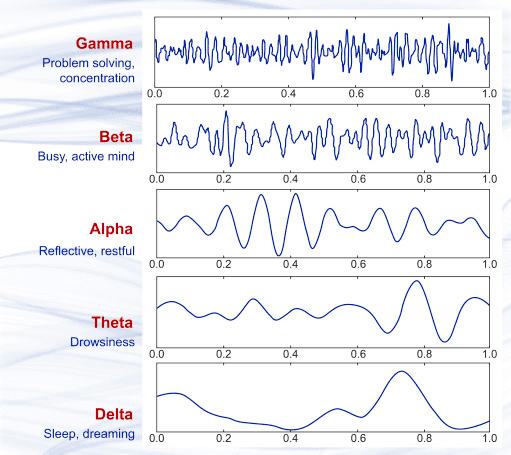Barefoot Walking

“And forget not that the earth delights to feel your bare feet and the winds long to play with your hair. ” -Kahlil Gibran
I am always going to be an advocate for physical activity and exercise, but this practice is more about taking care of the mind and spirit. An added bonus is the benefit of movement while in nature.
As my experience and knowledge for exercise increases so does my interest in the psychological effects. When I first started lifting weights I was primarily interested in getting bigger, stronger, and faster.
What originally inspired me to make the gym a part of my life was the desire to have big muscles. Today I still have the desire to improve my physique and push the limits of my capacity.
I realize now how impactful a consistent workout routine is on a healthy state of mind. There are many studies that support exercise as being a more effective treatment for mental illness than prescription medications.
Currently, I find myself looking forward to the gym on days when I am more tired than usual, and it’s absolutely true when stress has reached a peak.
Today I use exercise to support my overall well-being, which includes the happiness I feel by achieving a body I’m proud of, but more importantly, it’s become a ritual that fosters a positive state of mind that allows me to become more grateful for the rest of my life.
Working out does not have to always be about pushing yourself to the breaking point, it should also be about revitalizing yourself.
Adding days that serve as active rest and recovery are great for the mind and the body. Practices like yoga, foam rolling, light cardio, swimming, or any other activity that is low intensity should be a part of everyone’s routine.
Walking is a great practice to implement because it’s so easy to incorporate into our daily routine. To make this an even more holistic exercise for body, mind, and spirit consider practicing a walking meditation while barefoot to get an extra boost.
Today there is a big market for minimalist shoes that offer the same benefits you would receive by walking barefoot. This includes strengthening your internal foot muscles, improving balance, and creating a more stable arch.
Modern shoes have been blamed for diagnoses such as flat feet and bunions, which are deformities of the big toe causing them to angle inward toward the rest of the toes. There is disagreement among professionals but In theory, this is due to the narrow toe box that causes the toes to bunch together, contributing to a collapsed arch of the inner foot.
The barefoot and minimalist shoes market their ability to increase the space between the toes due to a wider toe box while increasing the activity of the internal foot muscles.
The research is unclear about whether or not barefoot environments are superior to wearing shoes during balance training in which subjects often make similar improvements at the end of the study’s duration.
In my experience working with patients I’ve found there are greater improvements in foot control and strength when exercising barefoot due to increased sensory feedback and muscle activity.
Shoes are too restrictive to allow for the desired movements necessary to contract the internal foot muscles fully in order to create an arch in the foot.
While doing this under the weight of the body the foot is forced to work harder than it normally would in a shoe. Having an increase in strength and stability of the foot will contribute to better balance by having a greater ability to control unwanted movement within and above the foot.
If I want to challenge a patient’s balance by creating instability I will have them stand on a foam pad which instantly decreases their ability to reduce postural sway.
When considering the shoes we wear most of them have a sole that is made out of rubber or foam. this can cause instability in the foot by taking away the ability to sense its position in space accurately.
When barefoot there is no delay or reduction in sensation from the ground, given there is no underlying condition affecting the skin or nerves.
1. Acupressure points on the soles of feet


Acupressure points are found throughout the body and are derived from treatment approaches that aim to simulate these areas to improve overall health and well-being.
Reflexology is a practice whereby medical professionals stimulate different parts of the feet and hands in order to facilitate healing and balance the nervous system.
In 2022 a systematic review was published using the Web of Science Core Collection database where over 800 articles relating to foot reflexology were studied to measure the field of research around reflexology and its development.
The articles reviewed were conducted worldwide dating back from 1991 to 2021. The majority of evidence supports the use of reflexology for reducing pain, alleviating stress, and improving overall quality of life. Another article published in 2015 reviewing the previous 10 years of research found similar results.
The hands and feet have the largest supply of nerve endings and receive the most information from the environment per centimeter. When walking outdoors the uneven surface will stimulate the foot in similar ways as the practice of reflexology.
Grass would be the best place to start because you’re getting the benefits of sensory stimulation while minimizing the potential for skin damage. Areas that are soft but more uneven are more effective for stimulating the different acupressure points of the foot.
If you add some moisture to the mix you’ve created the most ideal environment to maximize the benefits you’re getting by being skin-to-skin with Mother Nature.
The water will increase the conduction of electrical energy from the ground while also stimulating your nervous system and increasing blood flow.


2. Physical Effects of grounding
There are numerous studies that support the healing nature of the earth and how we can access these benefits through direct contact. Spending our time indoors and wearing shoes with solid rubber soles disconnects us from the earth’s surface.
As a short but powerful list, research has shown that grounding or “earthing” can reduce inflammation, improve sleep, increase wound healing, and decrease feelings of anxiety and depression.
Our bodies pick up negative ions while in nature which counteract the debilitating effects of free radicals that accumulate over time.
For more information on grounding read my article “Stay Grounded, Stay Healthy” for a better understanding.
1. Walking in nature reduces brain waves
Since the 2,000’s there have been various studies that have examined brain activity in response to looking at images and videos of natural settings. This was done using fMRI and EEG to map the differences seen before and after viewing.
The fMRI will map the changes in blood flow between different brain regions while an EEG measures the changes in electrical activity. Both tests will detect the moment-to-moment changes based on the subjects’ perceptions.
With our understanding of anatomy and physiology today we can use the information gathered from these imaging studies to determine how natural settings affect human cognition and emotional states.
A review of 26 studies measuring the effect of natural settings on brain wave activity has shown that alpha brain wave states are increased after viewing such images.
Alpha brain waves provide individuals with a greater sense of control over their internal states in relation to the outside world. Meaning, there is a natural reduction in negatively framed self-centered processing of the normal ups and downs of everyday life.
It becomes much easier to adopt an unattached attitude towards events that are less than ideal. With an increased sense of calm and coping that is not as accessible when we are stressed and hyperactive.

2. Reduces stress
Researchers also found that when viewing images of busy urban environments the areas of the brain associated with anxiety and impulsive behavior were increased.
In contrast, natural environments cause an increase in emotional regulation centers that respond to the external events that we form our perceptions from. Simultaneously creating a peaceful state of mind that grounds us in the moment and reduces our cognitive load.
In 1991 Roger Ulrich developed the stress reduction theory to illustrate nature’s effect on our emotional states. Subjects were rated as having lower states of depression and anxiety on subjective questionnaires after being in nature.
A complement to this concept is attention restoration theory which States that natural environments can reduce the amount of stimulation we receive and allow for more effortless brain function. Just like how driving on a clear and open road in the middle of the desert is not as taxing as a four-lane freeway in a busy city.
Measurements like heart rate variability (HRV) and skin conductance were also measured in response to viewing natural environments that provided further evidence of its calming effect on the mind and body.
In the simplest of comparisons these two data points can directly and indirectly give insight about internal states, whether it be excited or relaxed.
The fight or flight stress response can be correlated with an increase in skin conductance, most commonly occurring from visual or auditory stimuli that cause a negative emotional reaction. On the opposite end, HRV is a positive indicator for the rest and recovery response.
After viewing images of natural environments subjects exhibited both a decrease in skin conductance and an increase in HRV. While these are measurements of physiological responses they are derived from the positive psychological states that nature provides.
3. Increases creativity
Researchers at Stanford University in 2014 found that walking outdoors had the greatest effect on tests for convergent and divergent thinking. Convergent thinking tests are scored based on testers’ ability to solve problems that require one solution, while divergent thinking tests can be solved in multiple ways.
The results indicated a 60% increase in creativity when participants were walking rather than sitting with the best outcomes occurring when walking outdoors. There were similar findings in a study measuring the difference between indoor and outdoor exercise using EEG and creativity tests.
History has been filled with timeless thinkers who have attributed walking to the generation of their best ideas.
People like Aristotle, Nikola Tesla, Charles Darwin, and Steve Jobs to name a few, have utilized this simple and effective habit to stimulate their brain through peace of mind. Allowing the brain to work more effortlessly but efficiently.
For a boost in physical and psychological well being consider taking a walk outside, to maximize its benefit kick those shoes off and feel the ground beneath your feet.
Summary of main points
- Exercise doesn’t always have to be about taking care of the body, it’s just as important for the mind.
- Walking barefoot is an exercise that will strengthen the feet and improve stability.
- Reflexology is the practice of stimulating the bottom of the feet to balance our nervous system and facilitate healing.
- Grounding has been shown to have positive physical and psychological benefits just by contacting the ground directly.
- Some of the greatest benefits you get from exercising outdoors are due to the positive mental states it creates.
Call to action
Next time you go out for a walk or find a safe place where you can kick off your shoes and connect more deeply with nature.
Parks with large grass fields are perfect for barefoot walking, short grass being the most ideal.
This way you are less likely to step on something you couldn’t see through taller blades and it has a more comfortable feel on your skin.
Consider wearing sandals during your free time so you can more easily touch the ground whenever you have the opportunity.
Resources:
Azhar AN, Munteanu SE, Menz HB. Effects of supportive and minimalist footwear on standing balance and walking stability in older women. J Foot Ankle Res. 2023 Jun 19;16(1):38. doi: 10.1186/s13047-023-00634-y. PMID: 37331962; PMCID: PMC10278322.
Benz ABE, Gaertner RJ, Meier M, Unternaehrer E, Scharndke S, Jupe C, Wenzel M, Bentele UU, Dimitroff SJ, Denk BF, Pruessner JC. Nature-Based Relaxation Videos and Their Effect on Heart Rate Variability. Front Psychol. 2022 Jun 10;13:866682. doi: 10.3389/fpsyg.2022.866682. PMID: 35756241; PMCID: PMC9226437.
Cai DC, Chen CY, Lo TY. Foot Reflexology: Recent Research Trends and Prospects. Healthcare (Basel). 2022 Dec 20;11(1):9. doi: 10.3390/healthcare11010009. PMID: 36611469; PMCID: PMC9819031.
Cudejko T, Gardiner J, Akpan A, D’Août K. Minimal shoes improve stability and mobility in persons with a history of falls. Sci Rep. 2020 Dec 10;10(1):21755. doi: 10.1038/s41598-020-78862-6. PMID: 33303964; PMCID: PMC7730448.
Curtis R, Willems C, Paoletti P, D’Août K. Daily activity in minimal footwear increases foot strength. Sci Rep. 2021 Sep 20;11(1):18648. doi: 10.1038/s41598-021-98070-0. PMID: 34545114; PMCID: PMC8452613.
Embong NH, Soh YC, Ming LC, Wong TW. Revisiting reflexology: Concept, evidence, current practice, and practitioner training. J Tradit Complement Med. 2015 Sep 28;5(4):197-206. doi: 10.1016/j.jtcme.2015.08.008. PMID: 26587391; PMCID: PMC4624523.
Franklin S, Grey MJ, Heneghan N, Bowen L, Li FX. Barefoot vs common footwear: A systematic review of the kinematic, kinetic and muscle activity differences during walking. Gait Posture. 2015 Sep;42(3):230-9. doi: 10.1016/j.gaitpost.2015.05.019. Epub 2015 Jun 3. PMID: 26220400.
Grassini S, Segurini GV, Koivisto M. Watching Nature Videos Promotes Physiological Restoration: Evidence From the Modulation of Alpha Waves in Electroencephalography. Front Psychol. 2022 Jun 7;13:871143. doi: 10.3389/fpsyg.2022.871143. PMID: 35747675; PMCID: PMC9210930.
https://www.sciencedirect.com/topics/agricultural-and-biological-sciences/brain-waves
Kimura T, Mizumoto T, Torii Y, Ohno M, Higashino T, Yagi Y. Comparison of the effects of indoor and outdoor exercise on creativity: an analysis of EEG alpha power. Front Psychol. 2023 Jul 18;14:1161533. doi: 10.3389/fpsyg.2023.1161533. PMID: 37546462; PMCID: PMC10400450.
Laine CM, Spitler KM, Mosher CP, Gothard KM. Behavioral triggers of skin conductance responses and their neural correlates in the primate amygdala. J Neurophysiol. 2009 Apr;101(4):1749-54. doi: 10.1152/jn.91110.2008. Epub 2009 Jan 14. PMID: 19144740; PMCID: PMC2695635.
Michael Francis Norwood, Ali Lakhani, Annick Maujean, Heidi Zeeman, Olivia Creux, Elizabeth Kendall, Brain activity, underlying mood and the environment: A systematic review, Journal of Environmental Psychology. Volume 65, 2019. 101321, ISSN 0272-4944. https://doi.org/10.1016/j.jenvp.2019.101321.
Oppezzo M, Schwartz DL. Give your ideas some legs: the positive effect of walking on creative thinking. J Exp Psychol Learn Mem Cogn. 2014 Jul;40(4):1142-52. doi: 10.1037/a0036577. Epub 2014 Apr 21. PMID: 24749966.
Wei Z, Zeng Z, Liu M, Wang L. Effect of intrinsic foot muscles training on foot function and dynamic postural balance: A systematic review and meta-analysis. PLoS One. 2022 Apr 20;17(4):e0266525. doi: 10.1371/journal.pone.0266525. PMID: 35442981; PMCID: PMC9020712.
Zech A, Meining S, Hötting K, Liebl D, Mattes K, Hollander K. Effects of barefoot and footwear conditions on learning of a dynamic balance task: a randomized controlled study. Eur J Appl Physiol. 2018 Dec;118(12):2699-2706. doi: 10.1007/s00421-018-3997-6. Epub 2018 Sep 28. PMID: 30267226.
Share
Related Posts
Quick Links
Legal Stuff
Social Media

